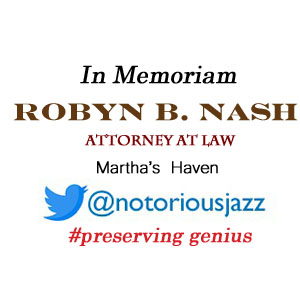
The Jazz Voyager
From Nashville to Bern the Jazz Voyager is crossing the pond once more to sit in the audience at Marians Jazzroom. The venue’s 126 seats offers a guarantee of a musical experience in authentic ambience within the harmonious interior reminiscent of a New York jazz club.
But before I take in some jazz, I’m arriving early in the day and this jazz voyager will be checking out the Bear Park, Museum of Communications, the Clock Tower, and the Einstein Museum.Catching Grammy winner Bill Charlap on the third evening of his five-day engagement will be a treat, especially witnessing for the first time the talents of saxophonist Nicole Glover. She’s a member of Ursa Major led by bassist Christian McBride and leads her own quartet. This isn’t the first time these two have paired up for this
The jazzroom is located at Engestrasse 54, 3012 Bern, Switzerland. For more information contact the venue at https://www.mariansjazzroom.ch.
More Posts: adventure,club,genius,jazz,museum,music,piano,preserving,saxophone,travel

Daily Dose Of Jazz…
Jerzy “Duduś” Matuszkiewicz was born on April 10, 1928 in Jasło, Poland and began playing jazz as a youth. He founded a jazz club at the YMCA in Kraków, Poland at age 20. and played with the orchestra of Kazimierz Turewicz.
A music enthusiasts club, Melomani, was founded in 1947 at the Łódź YMCA, a hang-out of nonconformist thinkers during the late 1940s. Moving to Łódź, Poland to study at the new Łódź Film School, he became part of the club and joined the sessions. After only a few concerts, the YMCA was closed due to promoting imperialist ideology using jazz music.
Jerzy founded and led a band in 1950, playing saxophones and clarinet with Marek Szczerbiński-Sart, trumpeter Andrzej “Idon” Wojciechowski, drummer Witold “Dentox” Sobociński, Marian and Tadeusz Suchocki and pianist Andrzej Trzaskowski and bassist Witold Kujawsk. Being separated from Western jazz by the Stalinist regime, they played a repertoire that did not compare to Western standards.
The band was offered space to practise at the Film School, performed informal concerts at the Film School, as well as in bars and private events, once a week. When they received an invitation to play a concert in Warsaw, Poland at the Academy of Fine Arts, they named themselves Melomani.
In 1952, pianist Krzysztof Komeda joined the band and expanded their performance reach. They played at the first jazz festival in Sopot, Poland in 1956. 1958 saw them as the first Polish jazz band invited to perform at the National Philharmonic in Warsaw. The group disbanded that same year.
Until 1964 he performed both in Poland and abroad. The following year he began to mainly compose and conduct music for movies and commercials. Moving to Warsaw with his wife, Grażyna, saxophonist, pianist, composer and bandleader Jerzy Matuszkiewicz died on July 31, 2021 at 93.
More Posts: composer,history,instrumental,jazz,music,piano,saxophone

Daily Dose Of Jazz…
George Mesterhazy was born April 8, 1954 in Hungary and came to the United States with his family when they fled Hungary following their country’s 1956 revolution. Settling first in upstate New York, they later moved to Atlantic City, New Jersey where he first played guitar and trumpet.
Switching to piano he became a professional musician, relocated to Los Angeles, California but eventually became well known in the area of Cape May, New Jersey.
Mesterhazy had recently released a new album with singer Paula West, Live at Jazz Standard, and the pair was scheduled to play the New York club together in May.
He was nominated for a Grammy for his arranging work on Shirley Horn’s 1997’s Loving You album, on which he also played. George also played with Les Paul, Bernadette Peters and others.
At Rowan University he ran the jazz piano program, taught privately and managed Cape May’s Merion Inn. Pianist and composer George Mesterhazy died quietly in his sleep at his home in Cape May on April 11, 2019 of natural causes. He was 59.
More Posts: bandleader,composer,history,instrumental,jazz,music,piano

GARY MOTLEY
Late Night Jazz Lab: Muse & The Flame Sessions with Gary Motley Quartet live at Eddie’s Attic!
Join us for an electrifying evening of jazz innovation as acclaimed pianist Gary Motley and his dynamic ensemble featuring Terreon Gulley, drums, Rod Harris, guitar, and Andy Eulau, bass, transform Eddie’s Attic into an intimate jazz laboratory. This unique 90-minute experience combines masterful performance with hands-on learning in Atlanta’s premier listening room.
The Evening Unfolds
9:00 PM – Experience the artistry of Gary Motley Quartet as they showcase selections from his latest project “Muse and The Flame,” featuring original compositions that blend traditional jazz vocabulary with contemporary innovation.
Interactive Jazz Lab
The evening features a special workshop segment where a selected student quartet will perform, receiving real-time guidance and insights from the pros. This rare opportunity offers musicians and audiences alike a glimpse into the collaborative spirit of jazz mastery.
His latest album, “Muse and the Flame,” features bassist Edwin Livingston and drummer Clarence Penn, adding to a catalog that showcases his distinct voice at the piano. When he’s not performing at major jazz festivals across the U.S. and internationally, you’ll find him at Emory University, where he founded the Jazz Studies program. There, he launched a technology-based Jazz Studio, reimagining how jazz education meets the digital age.
Tickets: $20.00 ~ $25.00
More Posts: adventure,bandleader,club,genius,instrumental,jazz,music,piano,preserving,travel

Daily Dose Of Jazz…
Tony Vella was born on April 4, 1937 in Terrasini, a Sicily commune in the metropolitan city of Palermo, Itlay. In 1957 he gained immense experience working with big and small configurations. In Italyhe was the main arranger, for numerous important record houses.
From 1972 he dedicated his efforts to cultural activities and the formation of young talents holding theory courses, and practical instrumental and ensemble music applied to jazz music. By 1975 Tony participated in the Pescara the Jazz Festival with the New Jazz Society of Palermo, the only Italian group invited to perform along with the Zoot Sims Quartet, Antony Braxton, Elvin Jones Quintet, Red Norvo Trio, Chet Baker Quartet, Charles Mingus Group, Roland Kirk Quintet and Don Cherry Organic Music Theatre.
Three years later he formed and directed L’Orchestra in collaboration with the Reinhardt Center for their concert season. Organized by the Associazione Siciliana Amici della Musica and introduced to Auditorium SS. Salvatore of Palermo.
In the Eighties Vella was a partr of the Messina Jazz Meeting with the Brass Group Big Band, as orchestra director and arranger. With the band he has collaborated with international musicians Archie Shepp, Hernie Wilkins, Mel Lewis, Sam Rivers, Toshiko Akiyoshi, Paolo Lepore, Franco Cerri, and Danilo Terenzi.
The next decade he established The Tony Vella Fusion Jazz Band entirely composed from young Sicialian musicians. A big band, modeled on some of the great American orchestras like Quincy Jones. The Fusion Jazz Band presented remarkable arrangements of a repertoire that includes Brazilian and popular jazz. They accompanied singers Beppe Vella, Gaetano Riccobono, and Tony Piscopo, as well as numerous musicians such asCalderone Ignazio, Aldo Oliveri, Benedetto Modica, Giovanni Mazzarino, Sergio Munafò, Aldo Messina, and Sebastiano Alioto, among others.
Pianist, organist, composer, arranger and orchestra director Tony Vella continues to perform, conduct and record.
More Posts: arranger,composer,director,history,instrumental,jazz,music,organ,piano



